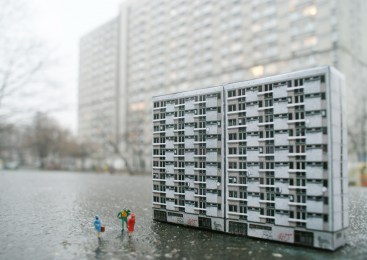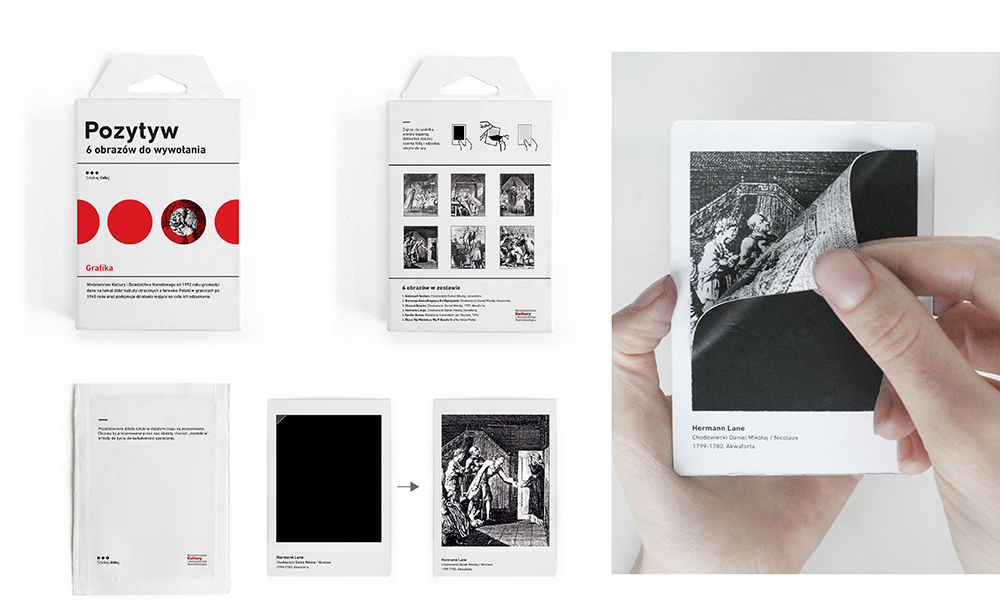Not Brutal
Although it may seem otherwise, the term 'brutalist architecture' doesn’t refer to brutality. This refers to the French expression “béton brut”, which means “raw concrete” and describes a trend which was strong from the 50s to the mid-70s , leading to the erection of buildings featuring undecorated concrete. Nowadays this kind of architecture is often criticized for being inhuman, but nevertheless it has plenty of enthusiasts. One of them is David Navarro, the Spanish co-founder of the Polish design studio Zupagrafika. When he first came to Poland he was amazed to discover that the streets of Polish cities are lined by numerous brutalist and modernistic buildings.
Fascinated by the uneasy aesthetic of these structures, he decided, along with Martyna Sobecka, the other co-founder of Zupagrafika, to produce their miniatures. Their idea for these models combined their liking for brutalist architecture with their interest in creative graphic design – as Zupagrafika, they created cardboard cut-outs that can be assembled with scissors and glue. The first series of cut-outs designed by Zupagrafika includes buildings from the Polish city of Poznań.
 'Żelazna Brama 'Cut-out by Zupagrafika, photo. courtesy of Zupagrafika studio
'Żelazna Brama 'Cut-out by Zupagrafika, photo. courtesy of Zupagrafika studioIllustrations Rather than Photographs
The series of miniatures of buildings from Poznań which was designed in 2012 is entitled Miasto Blok-How / Block-How City and is made up of 5 cut-outs. These cut-outs can be turned into models of characteristic, modernistic structures from that city such as the Polonez Orbis Hotel or the Alfa Department Store. The Miasto Blok-How series set a standard which was followed by Zupagrafika’s next series including miniatures of buildings from Warsaw and London. The models from Miasto Blok-How are made from 100% recycled cardboard and feature illustrations rather than photographs of the represented buildings’ exteriors.
These illustrations were prepared by Zupagrafika and are very detailed. One can notice the imperfections and graffiti that are be found on their facades. The models come with information about the buildings’ architects, construction years and localizations. Once assembled the miniatures are usually about a dozen centimetres tall. The 2014 Warsaw series is entitled Blok Wschodni / Eastern Block and includes 5 miniatures of buildings such as 8 Smolna Street or the PKO Rotunda. This year’s London series, named Brutal London, also includes 5 models, among them the Balfron Tower and the Space House. By creating fun models of brutalist buildings the founders of Zupagrafika hope to change the often negative perception of this type of structures.
 Zupagrafika's award winning gadget Positive, photo: press materials
Zupagrafika's award winning gadget Positive, photo: press materialsPositive
The 3 aforementioned series of cut-outs aren’t the only original designs of the Poznań-based studio Zupagrafika. For the Polish Ministry of Culture and National Heritage Zupagrafika, they prepared 4 intriguing sets of images of works of art that were looted from Poland during World War II. These 4 sets make up a design entitled Pozytyw / Positive. The images used in this design have a form that brings to mind a Polaroid photograph – in order to reveal the positive image of a given artwork one has to peel off a negative image of the artwork. The act of peeling off the negative symbolizes the process of retrieving the lost artworks.
Each of the 4 sets is dedicated to a particular category of works of art: sculpture, Polish painting, engraving and foreign painting. The idea behind Pozytyw is to promote knowledge about the Poland's process of recovering the looted works of art. Each of the sets has a Polish and English version and features a leaflet describing the Ministry of Culture and National Heritage’s efforts to recover the lost artworks. Copies of Pozytyw are handed out at meetings and conferences concerning war losses. In 2014 Pozytyw won the first prize in a competition organized by the Adam Mickiewicz Institute for gadgets inspired by works of art looted from Poland during World War II.
Zupagrafika's next big thing is Warszawa ’89 / Warsaw ’89, a map of Warsaw describing places, objects and buildings that were characteristic of the city in 1989. Zupagrafika is also planning to release another series of models of brutalist buildings in Katowice.
Written by Marek Kępa